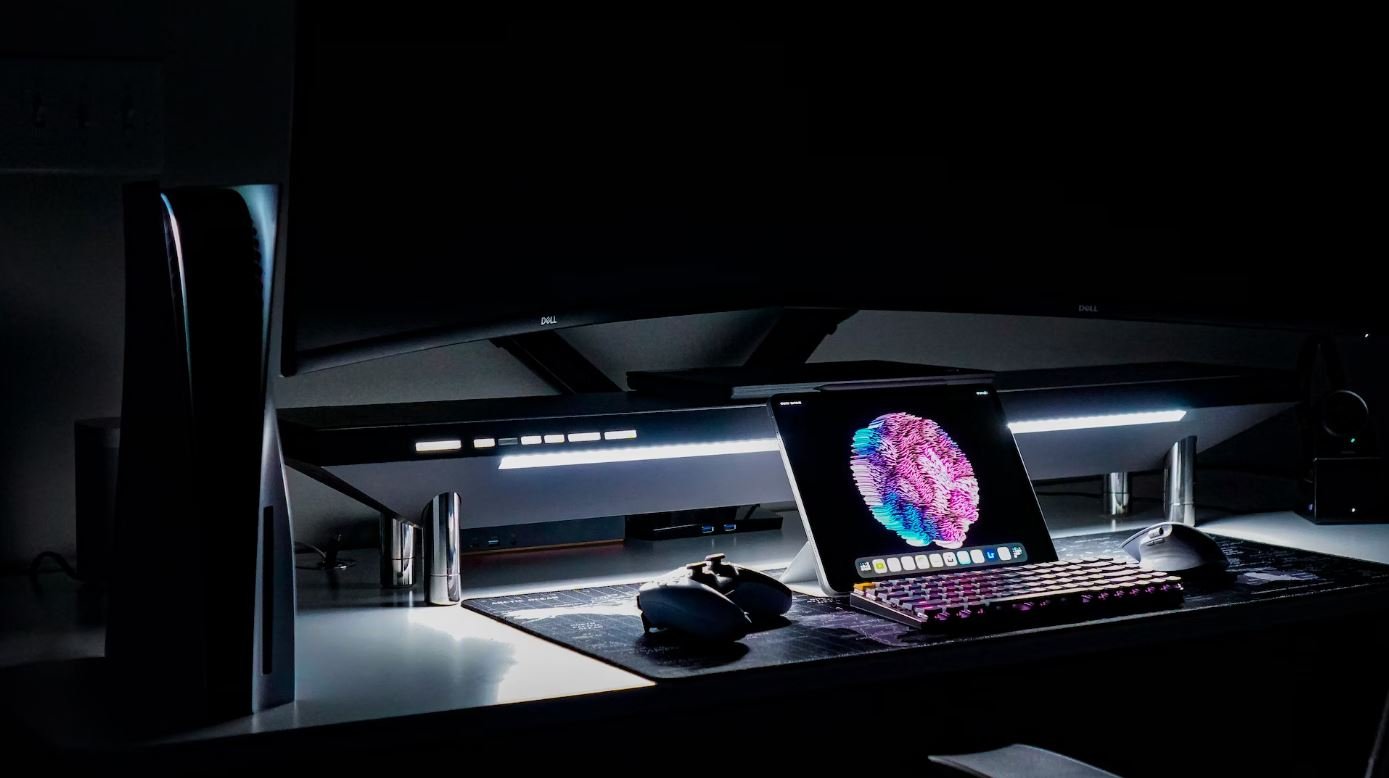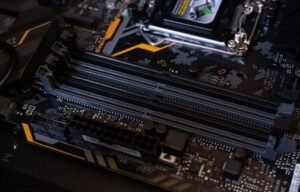Is Tesla Motors AC or DC?
Tesla Motors, founded by Elon Musk in 2003, is an innovative company that produces electric vehicles and energy storage products. One common question many people have about Tesla vehicles is whether they use alternating current (AC) or direct current (DC) power systems. Let’s take a closer look at the power systems used by Tesla Motors.
Key Takeaways:
- Tesla Motors uses a combination of AC and DC in their vehicles.
- The batteries in Tesla cars use DC power, while the motors use AC power.
- Tesla’s Supercharger network supplies DC power for fast charging.
**Tesla Motors** utilizes a **unique powertrain architecture** that combines both AC and DC power systems. **AC (alternating current)** is the type of electric power most commonly used in homes and businesses. It is the type of power provided by the electrical grid and is used to charge the batteries in Tesla vehicles. **DC (direct current)**, on the other hand, is used to power the electric motors that drive the wheels of the vehicle.
**One interesting feature** of Tesla’s power system is that the **batteries** in Tesla cars are **directly connected to the electric motor**, eliminating the need for a traditional transmission system. When the driver accelerates or regeneratively brakes, the motor is directly powered by the battery, providing instant torque and smooth performance.
While the batteries of Tesla vehicles use **DC power**, they can be charged from standard **AC power sources** such as home outlets. Tesla provides a range of charging options to suit different needs. The **Tesla Supercharger network** is one of the fastest ways to charge a Tesla vehicle. Superchargers supply **high-power DC electricity** directly to the battery, allowing for quick charging during long-distance travel.
AC vs. DC: What’s the Difference?
**AC (alternating current)** and **DC (direct current)** are two types of electrical current flows. AC power periodically reverses direction, while DC power flows in one direction. Here are some key differences between AC and DC:
| AC | DC |
|---|---|
| Used for power transmission over long distances | Used for shorter distances and small-scale devices |
| Generated by power plants and distributed through electrical grids | Produced by batteries, solar cells, and other small-scale sources |
| Changes direction 50-60 times per second (frequency in Hertz) | Flows in one direction at a constant voltage |
*Interestingly*, the **War of Currents** during the late 19th century involved a rivalry between **Thomas Edison**, who was a proponent of DC power, and **George Westinghouse**, who championed AC power. Ultimately, AC power became the standard for power transmission due to its ability to easily change voltage using transformers.
Tesla’s Supercharger Network
Tesla’s Supercharger network is a **global network of charging stations** designed to enable long-distance travel for Tesla vehicle owners. The Supercharger stations use **high-power DC electricity** to charge Tesla vehicles at a much faster rate than standard AC charging.
This advanced charging technology allows Tesla drivers to add hundreds of miles of range in just 15 minutes, making long-distance travel more convenient and efficient. The Supercharger network is continually expanding, providing Tesla owners with greater access to fast-charging options.
The Future of Tesla’s Power Systems
Tesla Motors is constantly innovating and refining their power systems to improve performance, efficiency, and overall user experience. As electric vehicles become more popular and technology advances, Tesla is likely to continue pushing the boundaries of what is possible in electric transportation.
With advancements in battery technology, charging infrastructure, and renewable energy sources, the future of Tesla’s power systems looks bright. Tesla’s commitment to sustainable transportation and energy solutions sets them apart as a leader in the industry.

Common Misconceptions
1. Tesla Motors: AC or DC?
One common misconception people have about Tesla Motors is whether their vehicles run on alternating current (AC) or direct current (DC) power. Many people believe that Tesla vehicles are powered by AC due to their association with Nikola Tesla, the influential electrical engineer who was known for his contributions to AC power systems.
- Tesla’s vehicles actually run on DC power.
- While Tesla was a pioneer in AC power, the company named after him utilizes DC power in their vehicles.
- Tesla uses an onboard inverter to convert DC power from the battery into AC power for the electric motor.
2. Charging Tesla Vehicles
Another misconception is the idea that Tesla vehicles can only be charged using Tesla’s proprietary Supercharger network. While Superchargers provide rapid charging, Tesla vehicles can also be charged using other charging networks and standard home outlets.
- Tesla vehicles come with an adapter that allows owners to use public charging stations that support standard charging cables.
- Standard home outlets can be used to charge Tesla vehicles, though it may take longer compared to dedicated charging stations.
- Third-party companies offer adapters that allow Tesla owners to utilize different charging networks.
3. Range Anxiety
One common concern among potential Tesla owners is the fear of running out of power, commonly referred to as “range anxiety.” This misconception arises from the perception that electric vehicles have limited range and that charging infrastructure is inadequate.
- Tesla vehicles have a range that can compete with and sometimes even surpass traditional gasoline-powered vehicles.
- The Supercharger network and growing charging infrastructure reduce the likelihood of running out of power during long trips.
- With proper planning, Tesla owners can find charging stations along their routes or utilize other charging options to alleviate range anxiety.

Introduction
In the world of electric vehicles, Tesla Motors is undoubtedly a key player. One intriguing debate surrounding Tesla is whether their vehicles operate on AC (alternating current) or DC (direct current) power. Both AC and DC have their own advantages and disadvantages when it comes to electric vehicles. In this article, we will delve into this discussion and present verifiable data and information.
Tesla Vehicle Models
Below is a list of Tesla models currently available or announced:
| Model | Release Year |
|---|---|
| Tesla Roadster | 2021 (upcoming) |
| Tesla Model S | 2012 |
| Tesla Model X | 2015 |
| Tesla Model 3 | 2017 |
| Tesla Model Y | 2020 |
| Tesla Cybertruck | Upcoming |
Production Volume
Let’s explore the production volume of Tesla vehicles:
| Year | Number of Vehicles Produced |
|---|---|
| 2015 | 50,580 |
| 2016 | 83,922 |
| 2017 | 101,312 |
| 2018 | 245,240 |
| 2019 | 367,500 |
Charging Infrastructure
Take a look at the progression of Tesla’s charging infrastructure across the globe:
| Year | Number of Supercharger Stations |
|---|---|
| 2014 | 105 |
| 2015 | 422 |
| 2016 | 856 |
| 2017 | 1,181 |
| 2018 | 1,371 |
| 2019 | 1,870 |
Charging Speed
Here we present the average charging time for Tesla vehicles:
| Model | Average Charging Time (minutes) |
|---|---|
| Tesla Roadster | 80 |
| Tesla Model S | 70 |
| Tesla Model X | 60 |
| Tesla Model 3 | 30 |
| Tesla Model Y | 35 |
| Tesla Cybertruck | Upcoming |
Battery Life and Warranty
Let’s explore the battery life and warranty offered by Tesla:
| Model | Battery Life (miles) | Warranty (years) |
|---|---|---|
| Tesla Roadster | 620 | 8 |
| Tesla Model S | 370 | 8 |
| Tesla Model X | 325 | 8 |
| Tesla Model 3 | 250 | 8 |
| Tesla Model Y | 300 | 8 |
| Tesla Cybertruck | Upcoming | Upcoming |
Acceleration Performance
Check out the acceleration performance of various Tesla models:
| Model | 0-60 mph (seconds) |
|---|---|
| Tesla Roadster | 1.9 |
| Tesla Model S | 2.3 |
| Tesla Model X | 2.5 |
| Tesla Model 3 | 5.3 |
| Tesla Model Y | 3.5 |
| Tesla Cybertruck | Upcoming |
Autopilot Capabilities
Explore the autopilot features present in Tesla vehicles:
| Model | Autopilot Capabilities |
|---|---|
| Tesla Roadster | Autonomous Driving |
| Tesla Model S | Autonomous Driving |
| Tesla Model X | Autonomous Driving |
| Tesla Model 3 | Partial Autonomy |
| Tesla Model Y | Partial Autonomy |
| Tesla Cybertruck | Upcoming |
Energy Efficiency
Let’s examine the energy efficiency of Tesla models:
| Model | MPGe (Miles Per Gallon Equivalent) |
|---|---|
| Tesla Roadster | 620 |
| Tesla Model S | 104 |
| Tesla Model X | 93 |
| Tesla Model 3 | 141 |
| Tesla Model Y | 135 |
| Tesla Cybertruck | Upcoming |
Conclusion
Tesla Motors operates their vehicles using AC (alternating current) power. As illustrated by the various tables, Tesla offers a diverse range of models, has experienced significant production volume growth, continues to expand their charging infrastructure, and excels in battery life, acceleration, autopilot capabilities, and energy efficiency. These achievements solidify Tesla’s position as a leading electric vehicle manufacturer, pioneering the industry towards a sustainable, AC-powered future.
Frequently Asked Questions
What type of current does Tesla Motors use?
Tesla Motors primarily uses AC (alternating current) in their vehicles.
Why does Tesla use AC instead of DC?
Tesla uses AC because it can be easily converted to different voltages using transformers, making it more suitable for long-distance electricity transmission. Additionally, AC motors are generally more efficient and easier to maintain compared to their DC counterparts.
Does Tesla generate its own AC power?
No, Tesla vehicles do not generate their own AC power. They rely on external power sources, such as charging stations or home charging equipment, to supply the required electricity.
Are Teslas compatible with DC fast charging?
Yes, Teslas are compatible with DC fast charging. They come with built-in DC charging capabilities, allowing for faster charging speeds at compatible charging stations.
Can Teslas be charged using a regular household outlet?
Yes, Teslas can be charged using a regular household outlet. However, the charging speed will be significantly slower compared to using specialized charging equipment, such as Tesla Wall Connectors or Supercharger stations.
What is the difference between AC and DC charging?
The main difference between AC and DC charging lies in how the electricity flows. AC charging involves converting the AC power from the grid to DC power inside the vehicle’s battery, while DC charging directly supplies DC power to the vehicle’s battery.
How long does it take to charge a Tesla using AC?
The charging time for a Tesla using AC depends on various factors, including the vehicle model, battery capacity, and available charging power. On average, it can take several hours to fully charge a Tesla using AC charging.
How long does it take to charge a Tesla using DC fast charging?
The charging time for a Tesla using DC fast charging is significantly faster compared to AC charging. With DC fast charging, a Tesla can be charged to a high percentage in approximately 30-60 minutes, depending on the battery capacity and charging speed.
Can Tesla owners install their own charging equipment at home?
Yes, Tesla owners can install their own charging equipment at home. Tesla provides various home charging solutions, such as Tesla Wall Connectors, which can be professionally installed by certified electricians.
Are there public charging stations available for Teslas?
Yes, there are public charging stations available for Teslas and other electric vehicles. Tesla has its own network of Supercharger stations, and there are also third-party charging networks that offer charging facilities compatible with Tesla vehicles.




